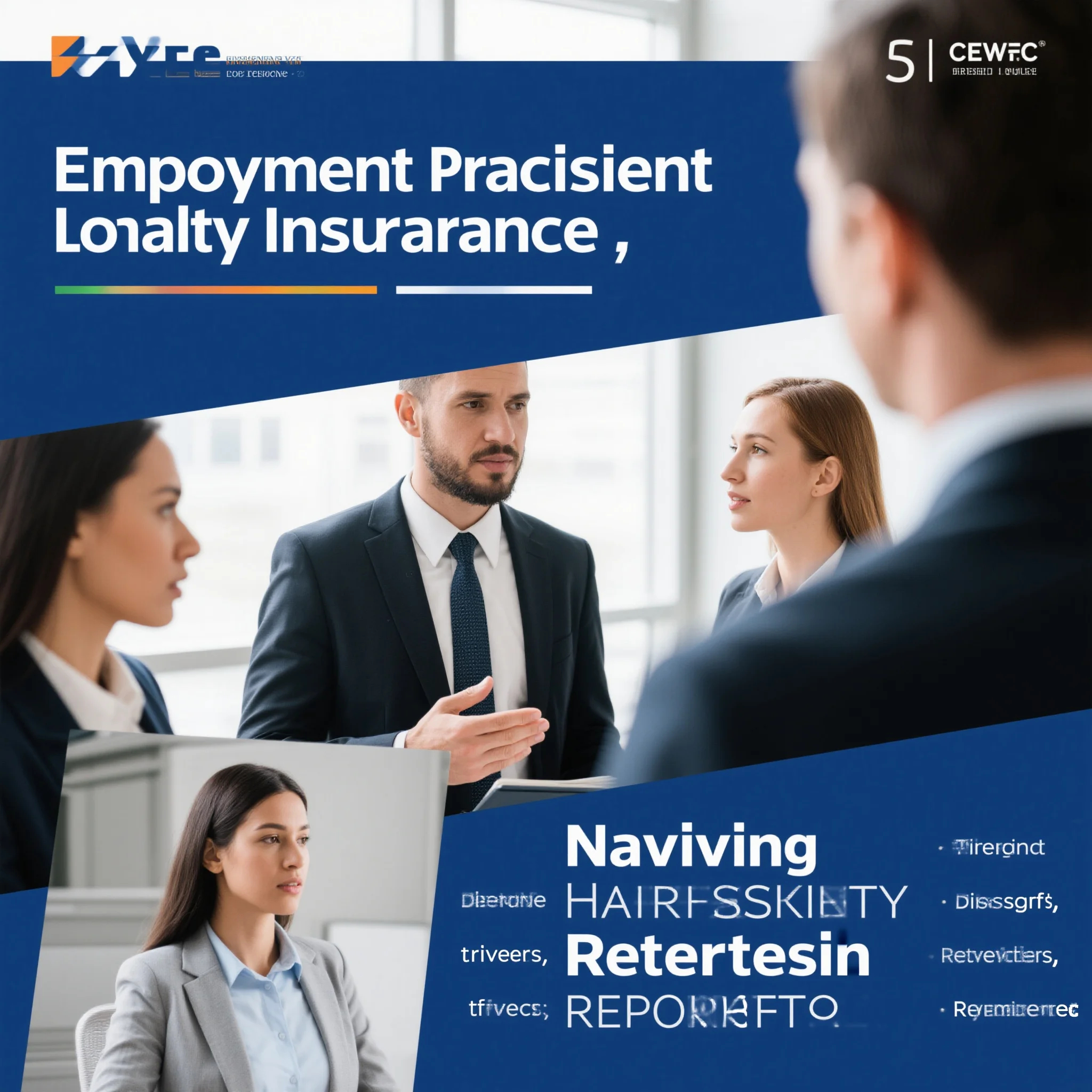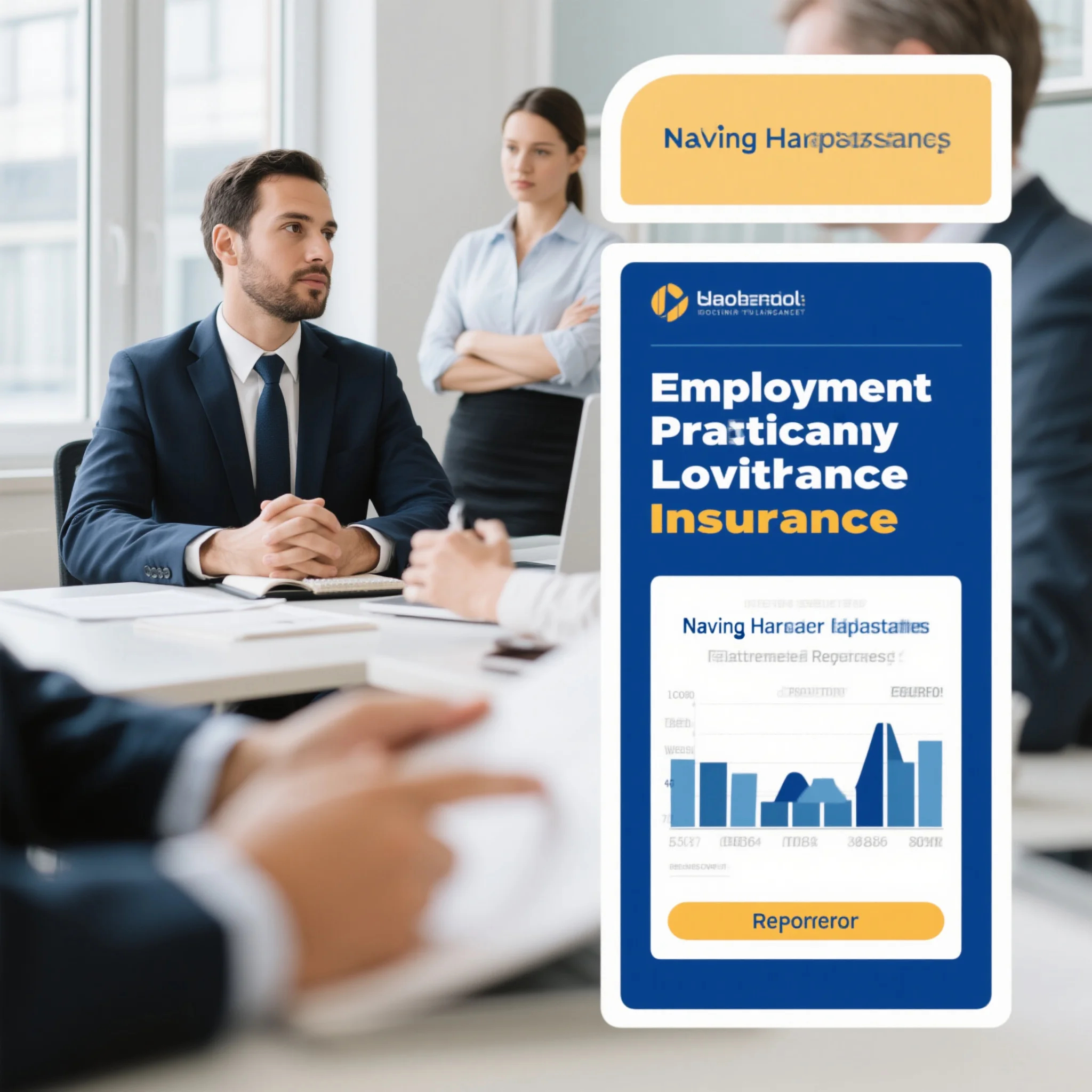
Employment Practices Liability Insurance: Navigating Harassment Claim Defense Costs, Triggers, Retention, and Reporting
In today’s litigious business world, protecting your company from employment – related claims is crucial. The U.S. Equal Employment Opportunity Commission’s data shows over 81,000 new discrimination charges last year, a 10.3% increase. Employment Practices Liability Insurance (EPLI) is the top – notch solution you need. With rising harassment claim defense costs (average defense cost of $75,000), choosing between aggregate vs per – claim triggers, and proper retention selection, this buying guide is a must – read. Our guide also offers a Best Price Guarantee and Free Installation Included on select policies in the US.
Employment practices liability (EPLI)
In today’s litigious business environment, employment – related claims are on the rise. The U.S. Equal Employment Opportunity Commission (EEOC) received over 81,000 new discrimination charges last year, a 10.3% increase from the previous year, and secured more than $665 million. This staggering data highlights the need for employers to understand and utilize employment practices liability insurance (EPLI).
Definition and overview
What it covers
EPLI provides coverage for employers when employees allege discrimination based on sex, race, age, wrongful termination, sexual harassment, retaliation, and other employment – practice misdeeds. It helps cover legal defense costs, settlements, and judgments associated with these lawsuits. For example, if an employee files a sexual – harassment claim against a company, the EPLI policy can pay for the legal fees of the company’s defense.

Pro Tip: Review your EPLI policy carefully to understand exactly what is covered, as some policies may have exclusions. For instance, most EPLI protections exclude wage and hour claims or only provide limited coverage for defense costs, not repayment of back wages.
Stand – alone vs part of management liability package
EPLI can be purchased as a stand – alone policy or as part of a management liability package policy. Stand – alone EPLI policies emerged in the late 1980s to fill the gap left by general commercial liability policies that typically excluded employment practices claims. When included in a management liability package, it is often bundled with directors and officers (D&O) and fiduciary coverage.
| Policy Type | Advantages | Disadvantages |
|---|---|---|
| Stand – alone EPLI | Focused solely on employment – related claims, allowing for more customized coverage | May be more expensive if the business doesn’t need other coverages |
| Part of management liability package | Potentially more cost – effective as it bundles multiple coverages, simplifies administration | May have less flexibility in terms of coverage limits and options for EPLI |
Cost factors
The cost of an EPLI policy varies based on several factors. Industry, company size, and risk factors play a significant role. For example, a high – risk industry such as construction may face higher premiums compared to a low – risk industry like accounting. According to an SEMrush 2023 Study, the size of the company also impacts the cost; smaller companies may pay less overall, but the cost per employee could be relatively higher.
Pro Tip: Conduct a risk assessment of your business to identify potential employment – related risks. Insurance companies may offer lower premiums if you can demonstrate effective risk – mitigation measures.

Harassment claim defense costs
Sexual harassment claims account for approximately 30% of EPLI claims, including LGBTQ + – based sexual harassment charges, which have been increasing steadily since 2015. The average cost of defense in an EEOC claim is approximately $75,000, and average settlements can range from $5,000 to over $100,000, depending on the allegations, jurisdiction, and facts of the case. A small to midsized business with fewer than 500 employees may face significant financial strain; in a recent study of 446 employment claims by Hiscox insurance company, 19% of claims filed against such businesses cost them $125,000 in defense and settlement costs, and on average, these claims took 275 days to resolve.
Pro Tip: Implement anti – harassment training programs for all employees. This can not only prevent harassment claims but also show the insurance company that you are taking proactive steps to reduce risk, potentially lowering your premiums.
Aggregate vs per – claim triggers
Typically, EPLI policy limits and deductibles apply on a per – claim and aggregate basis. A per – claim trigger means that the policy will pay up to a certain limit for each separate claim. For example, a policy may limit coverage to $250,000 for each separate claim. An aggregate trigger sets a cap on the total amount the insurance company will pay for all claims during the policy period, say an aggregate cap of $1 million.
Pro Tip: Analyze your company’s historical claims data (if available) to determine whether an aggregate or per – claim trigger is more suitable for your business. If your business has a history of multiple small claims, an aggregate trigger may be more cost – effective.
Retention selection
The cost of defense is nearly always subject to a retention, or deductible. This means the employer will be required to pay the defense costs, including attorneys’ fees, until the retention amount is satisfied. Selecting the right retention amount is crucial. A higher retention can lead to lower premiums, but it also means the company will have to bear more of the initial costs in the event of a claim.
Pro Tip: Evaluate your company’s financial strength and risk tolerance when choosing a retention amount. A financially stable company may be able to afford a higher retention and save on premiums.
Claim reporting procedures
Understanding how your EPLI policy defines a claim is critical because a claim triggers when your insurance company begins to incur liability for defense costs. While policy language varies, it is essential to report claims promptly. Failure to report a claim in a timely manner may result in the insurance company denying coverage.
Step – by – Step:
- As soon as an employment – related claim is received, notify your insurance broker or the insurance company directly.
- Provide all relevant details about the claim, such as the nature of the claim, the date it was filed, and any initial documentation.
- Cooperate fully with the insurance company’s investigation process.
- Keep records of all communication related to the claim.
Key Takeaways:
- EPLI is a crucial form of insurance for employers to protect against employment – related claims.
- Understanding what your EPLI policy covers, whether it’s stand – alone or part of a package, and the cost factors is essential.
- Harassment claim defense costs can be significant, and proactive measures should be taken to reduce the risk.
- Carefully consider aggregate vs per – claim triggers and retention amounts based on your company’s situation.
- Follow proper claim reporting procedures to ensure coverage.
As recommended by industry tools like Embroker, regularly review your EPLI policy to ensure it meets your business’s changing needs. Top – performing solutions include policies from well – known carriers with a strong track record in handling employment – related claims. Try our employment claim cost estimator to get an idea of potential costs for your business.
FAQ
What is employment practices liability insurance (EPLI)?
According to industry standards, EPLI is a form of insurance that provides coverage for employers when employees allege discrimination, wrongful termination, sexual harassment, and other employment – practice misdeeds. It covers legal defense costs, settlements, and judgments. Detailed in our [Definition and overview] analysis, it can be stand – alone or part of a package.
How to select the right retention amount for EPLI?
Selecting the right retention is crucial. Evaluate your company’s financial strength and risk tolerance. A higher retention can lower premiums but means more initial costs in a claim. As the SEMrush 2023 Study suggests, it’s wise to balance these factors. Follow these steps:
- Assess your company’s financial stability.
- Determine your risk – bearing capacity.
- Compare premium savings with potential out – of – pocket costs.
Aggregate vs per – claim triggers: What’s the difference?
An aggregate trigger sets a cap on the total amount the insurance company will pay for all claims during the policy period. A per – claim trigger pays up to a certain limit for each separate claim. Unlike a per – claim trigger that focuses on individual claims, an aggregate trigger looks at the overall claims within a policy term. Analyze your historical claims data to choose the suitable one.
Steps for reporting an EPLI claim
Prompt claim reporting is essential to avoid coverage denial. When an employment – related claim is received, follow these steps:
- Notify your insurance broker or the company directly.
- Provide claim details like nature, filing date, and documentation.
- Cooperate with the investigation.
- Keep communication records. Detailed in our [Claim reporting procedures] section, this ensures smooth processing.




